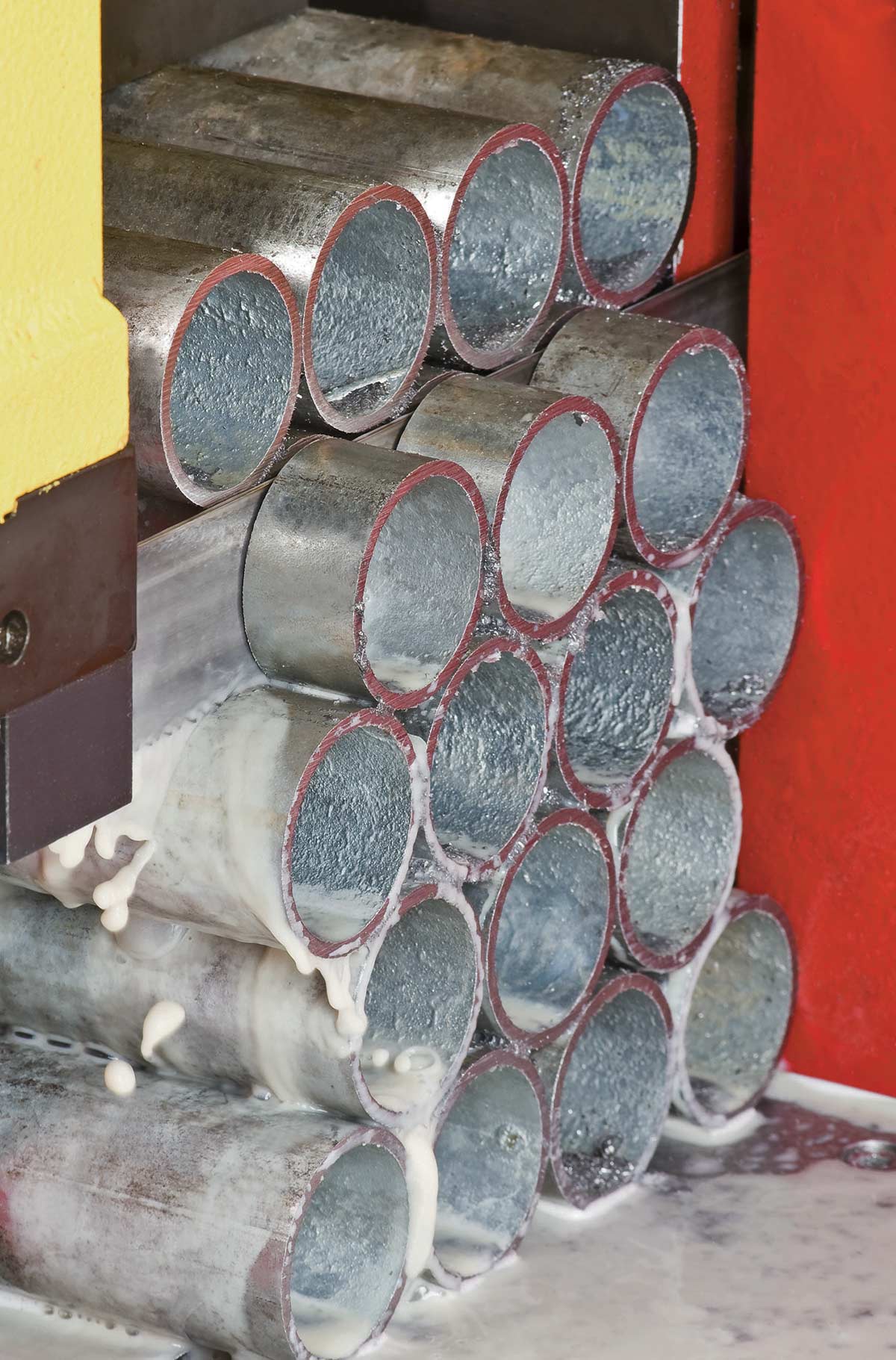ll materials present unique cutting challenges. Matching the right tools with the application is part of the battle. Band saws are the best option for job shops that need speed, quality and consistency. The equipment is also the most cost-effective method when it comes to cutting exotic materials. Blade choices are based on the type and size of the material being cut. Understanding material characteristics before you cut can deliver longer band saw blade life and the best production results. Some basic guidelines can help.
Soft materials include carbon steels, aluminum and copper. In some cases, soft materials can be as difficult to cut as hard materials because they tend to load the tooth gullets, resulting in premature saw blade wear and, in other cases, tooth strippage.
When tooth gullets fill, only the very tip of the tooth is actually cutting. Loaded gullets generate excessive forces on each tooth. The basic rule of thumb for tooth selection on any given material is to have no fewer than three teeth and no more than 10 to 14 teeth in the material at all times. This allows the teeth to grab a chip and release it before the gullets fill. As soft material tends to load quicker, it is critical to avoid using a blade with a fine pitch. Generally speaking, in most cases and dependent upon the specific soft material, it is better to select a coarser blade pitch versus a finer one.

Hard materials such as Inconels, Monels and Hastelloys present a different set of problems. Based on the cutting properties of these materials, it is very unlikely that the gullets will fill, so blade selection should take that into account. The teeth have a much more difficult time of engaging the material and tend to pull a much thinner chip. Applying the high end of the rule of thumb approach translates to a blade with more teeth engaged in the cutting process than would be possible when sawing soft material.

For example, if you consider the processing characteristics of aluminum, cutting 3-in.-thick aluminum using a 1.4/2 tooth pitch falls within the criteria of maintaining a minimum of three teeth in the material at all times. However, using the same blade to cut a similar size piece of Inconel 718 would cause premature blade failure because the teeth would be too coarse to engage and pull the necessary chip load.
Instead, a 3-4 tooth pitch is a better choice for Inconel 718. It engages the material with more teeth and doesn’t load the gullets, providing optimal sawing productivity and maximum blade life.
Material size determines which tooth pitch to use. In general, the smaller the material/part, the finer the tooth pitch should be. Alternatively, a coarser tooth pitch is desirable for larger parts.
This is also true of materials that are bundled. While taking note of an individual bundle size, be sure to take into account the size of the bundle as a whole. Bundles can present problems when determining blade pitch, and it is likely there will be no perfect solution. That said, arriving at a tooth pitch by determining what true material size the saw blade will be cutting helps determine the proper pitch.
A customer that was bundle cutting angle iron, based tooth selection on the size of each angle. A 10/14 pitch blade was used to cut a bundle that was approximately 10-in. by 10-in. The 10/14 blade was much too fine a pitch to cut what was essentially a solid in the middle of the bundle. A Starrett saw specialist recommended a 3-4 tooth, boosting production and tool life significantly.
In another example, a customer successfully used Starrett band saw blades for an extended period of time. When blade life decreased, they contacted Starrett. A specialist found they had been cutting carbon steels with a bi-metal blade but had switched to Inconel to process a new job. They were using the same blade, speeds and feeds. By switching to a carbide-tipped blade and readjusting the speeds and feeds, the company was able to process Inconel successfully.
There are myriad unique sawing applications. If a manufacturer is in doubt, it is best to consult with a supplier to determine the optimal band saw blade for the job at hand.
Athol, Massachusetts, 978/249-3551, starrett.com.
